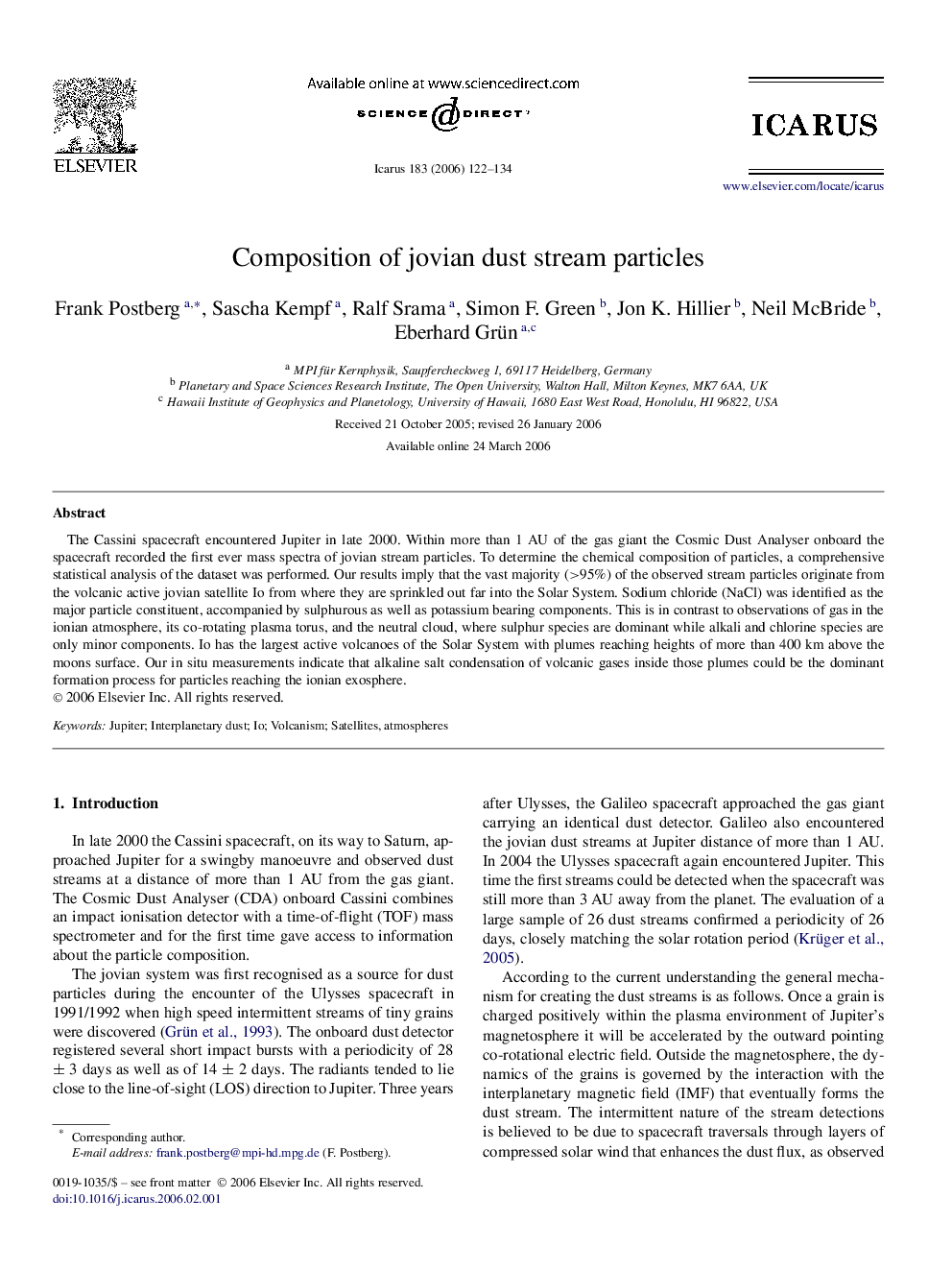| Article ID | Journal | Published Year | Pages | File Type |
|---|---|---|---|---|
| 1776081 | Icarus | 2006 | 13 Pages |
The Cassini spacecraft encountered Jupiter in late 2000. Within more than 1 AU of the gas giant the Cosmic Dust Analyser onboard the spacecraft recorded the first ever mass spectra of jovian stream particles. To determine the chemical composition of particles, a comprehensive statistical analysis of the dataset was performed. Our results imply that the vast majority (>95%) of the observed stream particles originate from the volcanic active jovian satellite Io from where they are sprinkled out far into the Solar System. Sodium chloride (NaCl) was identified as the major particle constituent, accompanied by sulphurous as well as potassium bearing components. This is in contrast to observations of gas in the ionian atmosphere, its co-rotating plasma torus, and the neutral cloud, where sulphur species are dominant while alkali and chlorine species are only minor components. Io has the largest active volcanoes of the Solar System with plumes reaching heights of more than 400 km above the moons surface. Our in situ measurements indicate that alkaline salt condensation of volcanic gases inside those plumes could be the dominant formation process for particles reaching the ionian exosphere.
